Tioga Road History Is Fascinating
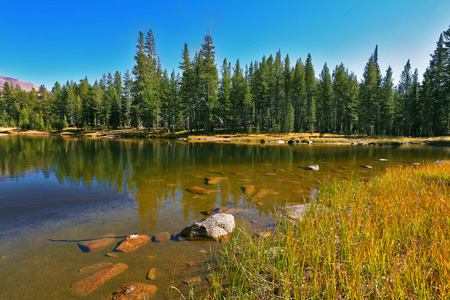
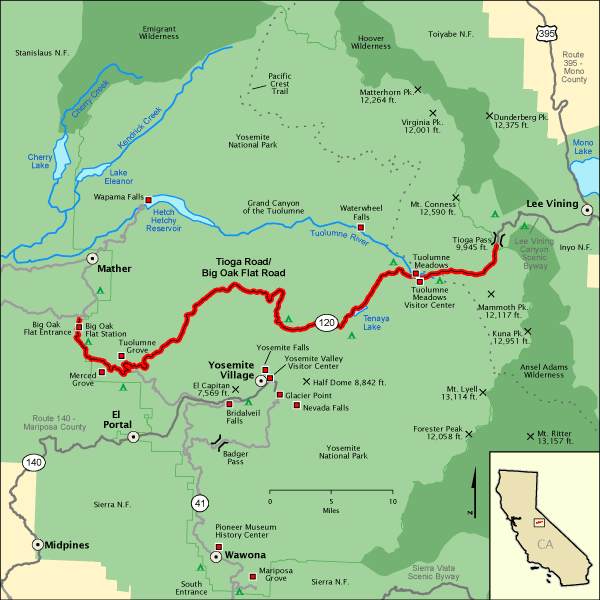
Tioga road history is fascinating!
First established by the animals of the region, Indians soon followed the animal trails and eventually established “trade paths” of their own over the difficult terrain.
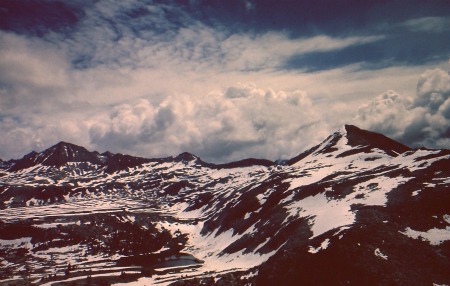
The Sierran range provided an effective natural barrier rising to over 13,000 feet and challenging both animal and human travelers with dangerous obstacles and unpredictable, rapidly changing, and often deadly weather conditions.
Adventurers traveling from settlements in the Eastern United States came upon this final barrier to the West. Through determination, training and previous experience they somehow managed the crossing.
Points along the Sierra Nevada range like Tioga Pass, provided lower areas in the mountain ranges- (though certainly not low at over 9,900 feet in elevation).
As ancient Indian paths through the mountain passes were re-discovered by white explorers and became more established, crossing the Sierra became less a question of finding a way across them and more a matter of traveling during the right time of year.
At these elevations deep snow would fall unexpectedly and stay on the ground once it did, making the mountains un-passable. The Donner party would have this very thing happen to them and became a terrible example.
Gold!
In following years while in pursuit of Indians into the Sierra mountain range from the west, a Cavalry troop would discover gold, but for some unknown reason, interest in exploring the area developed slowly over the following years.
Surprisingly it would be silver and not gold that would drive the prospectors to establish their claims high in the mountains. Rich investors would recognize the potential for riches, buy out the most promising claims and begin to establish the first mine.
It quickly became clear that heavy mine drilling equipment would be needed. 16,000 pounds of machinery was dragged by teams of horses into the mountains to the mine without a road.
There needed to be a mining road built, and with the promise of great riches, the money was spent to build one. The Great Sierra Mining Road would be the first built up the west side of the mountain range and would provide sections that are today a part of the Tioga Road.
The Mines Go Bust
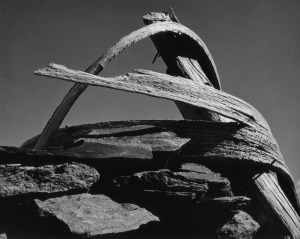
During the early years, the old mining road was kept clear of fallen trees and wash-outs and provided a means for travel by wagon. After the mines closed, it became neglected and was passable only to those on horseback or foot.
Ownership of the road changed hands, and squabbles began between those using the road, and the new owners who weren’t spending their money to maintain it…The bickering would go on for years.
Use by private citizens traversing the high country and by the cavalry patrolling Yosemite Park continued to increase.
Early entrepreneurs saw a jump in traffic on the road and began establishing facilities providing food and shelter for its travelers.
It became clear years later in court that the work of keeping the road clear of obstacles hindering travel never was paid for by the owners of the road. As it turns out, the operators of the lodges along the road were the ones who kept the roads clear and passable.
Early Lodges Along The Tioga Road
Word spread quickly amongst travelers of the comfortable new facilities, good food, and fishing opportunities along the road. But it was the unequalled scenic beauty that brought the travelers to the area in the first place.
The camps along the “Tioga” became a destination, and the road became more than just a means to traverse the high country of Yosemite Park.
The camps of White Wolf, Murphy’s, The Aspen Valley Lodge and Crockers Resort flourished along the route and provided many memorable experiences for their guests over the years.
A New Era...Stephen T. Mather
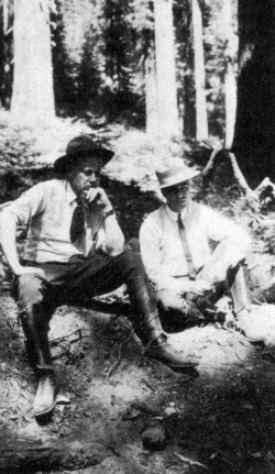
Most consider Stephen Mather to be the father of the National Park Service. A review of the most important steps he took in the establishment of what would become the Tioga Road is worth considering.
It is highly likely that the Tioga Road that we travel today would not exist were it not for Stephen Mather. Mather knew that with the growing popularity of the automobile, that this road would be a crucial step in making Yosemite accessible to the public.
Here is how he got it done:
- Director Mather lobbied to have a special provision passed by Congress to allow for the US Government to receive gifts on behalf of the National Park Service.
- Mather then began raising the money for the purchase of the privately owned but essentially abandoned Tioga Road, from private sources.
- Mather contributed the balance of the price of the road out of his own pocket.
- As
a government employee Stephen Mather could not transfer title to the
federal government himself. He recruited a friend to do it.
- Mather
invited specially selected rich and influential attendees to a private
dedication of the Tioga Road. They would become powerful advocates for
future National Park Service initiatives.
- Mather would drive the realignment and modernization of the old road along its entire length from the Tioga Pass in the East to the Western Park Boundary…with the sole purpose of making it attractive and comfortable for modern automobile traffic.
Traveling The Tioga Road Today
Traveling comfortably along the modern Tioga Roads roughly 39 miles, (whether through the Tioga Pass from the East or over the Big Oak Flat road from the West), it is easy to forget what was involved in its construction.
Providing a spectacular assortment of stunning visual vistas through Yosemite’s high country, we “experience” the entire route only after the annual reopening of the Tioga Pass. By in large, the date of the reopening is driven by the severity of the previous winters snows, but there are very likely trees to remove from the road and other damage to repair as well.
94%, (700,000 acres), of Yosemite National Park is Wilderness…and the Tioga Road most certainly remains a wilderness road.
Perhaps this fact is best illustrated by topographic maps showing visually the extreme range of elevations and physical challenges through which the road passes.
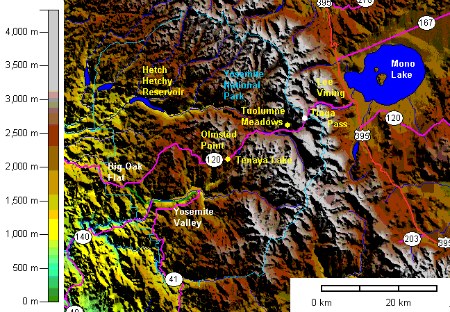
A Complete History Of The Tioga Road
For those readers with an interest in a complete and in-depth history of today's Tioga Road and how it came into existence, there are three installments.
These are arranged chronologically.
Simply follow the links beneath the thumbnails in the right column of this page.
Keith Trexler was a Junior Park Naturalist in Yosemite when he wrote “The Tioga Road… A History”.
Yosemite Nature Notes was now named YOSEMITE, and Keith’s history of the road filled an entire edition.
Beginning with the discovery of silver and the establishment of the Great Sierra Mine, his story led naturally to how a road was built to simplify the shipment of supplies to the mine site.
Sadly, the mining operations shut down after only a short time and the road was abandoned.
But the abandoned Old Sierra Silver Mine road was regularly used by travelers through the Park though it was not being maintained by its’ owners. Lawsuits over this were finally brought against the owners by the government though the matter was never actually settled in the courts.
Upon his appointment, Park Service Director Stephen Mather jumped through a variety of hoops to raise enough money to buy the road, which was then donated to the government.
As is often the way with the government, more time passed while studies of the roads route were made, recommendations were offered and then there were more studies.
Years would pass before everything was decided and all of the road work was completed. The construction of the road as we know it today was finally finished.
With the exception of some smoothing here and a little updating there, what you are reading in the installments that make up the complete history of the Tioga Road appeared first in Keith Trexlers article in YOSEMITE from 1961. Thank you Keith!
To return to the Homepage from Tioga Road History please click here.

The Complete Tioga Road Story...And Other Yosemite History
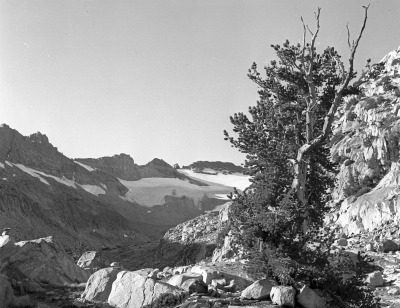
Early Tioga History-Indian Paths And Silver Mines
Yosemites Old Tioga Road Not For The Faint Of Heart
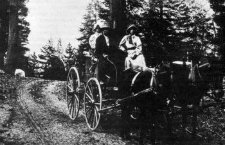
Lawsuits And Lodges...The Story Continues
Yosemite's Beautiful Tioga Road Today
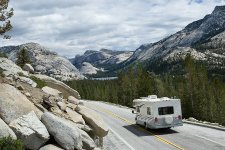
Stephen Mather And Todays Tioga Road
Yosemite Cowboys Indians And The Wild West... A Book In Print
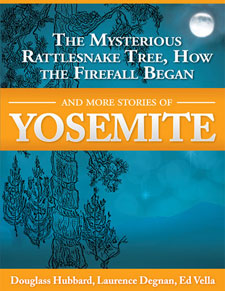
Yosemite's Mysterious Rattlesnake Tree







